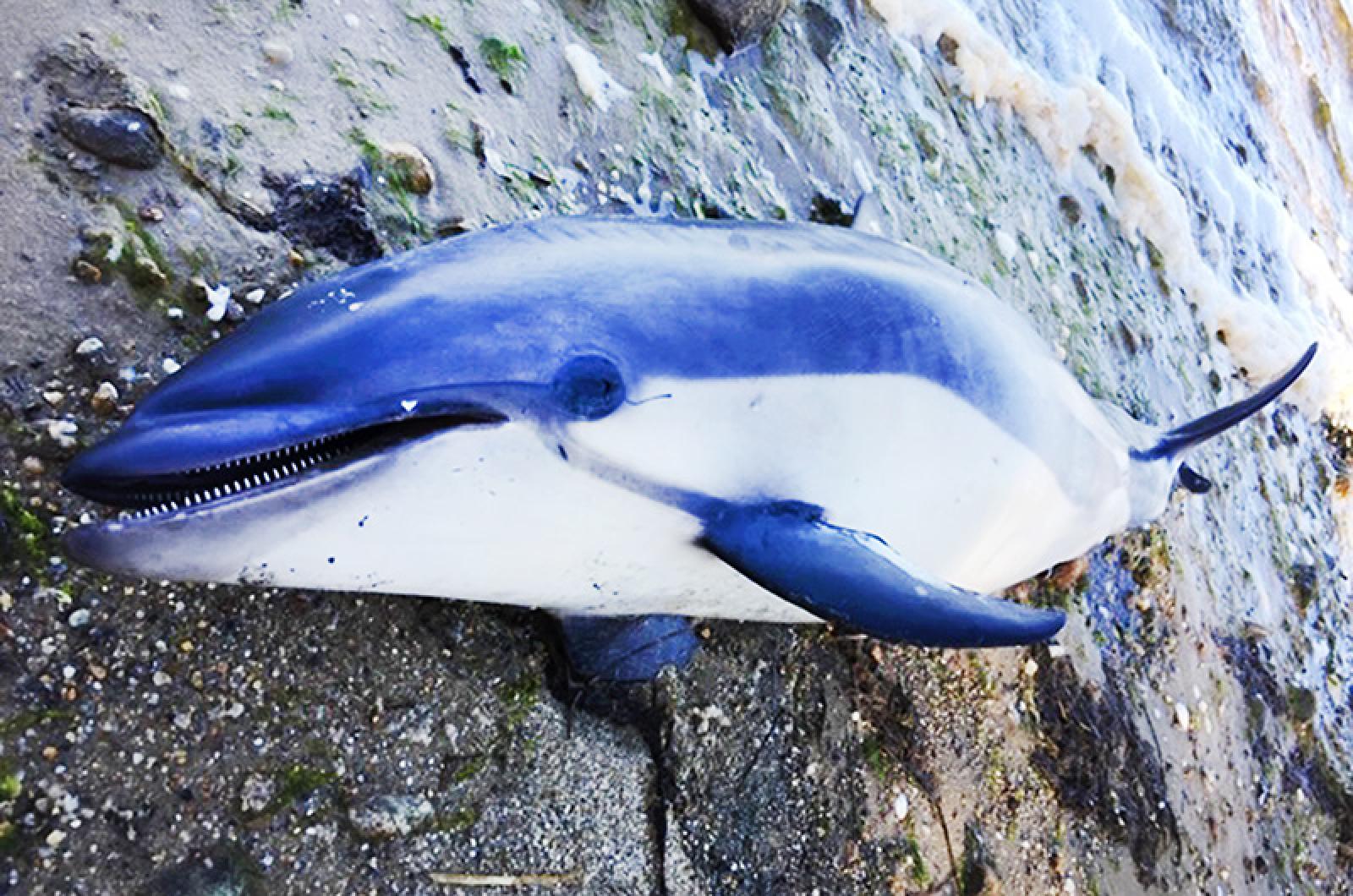No one likes to be stranded.
Whether you can blame it on the boats, the weather or car trouble, there is something disconcerting about being where you don’t want to be – and the powerlessness that accompanies it.
This is even more true for wild creatures, which can and do find themselves defenseless -- often at the whim of the tides, currents, wind or weather.
Consider the situation of an Atlantic white-sided dolphin which found itself struggling in Sengekontacket Pond last weekend. Rob Morrison, assistant shellfish warden, was tending to oyster rafts in Major’s Cove when he saw a large tail flipping on the Felix Neck beach. The tail belonged to a dolphin which was beached on the shoreline. In this case, being a “washashore” was the worst thing to be.
By the time Morrison got to the animal, it was too late; the dolphin was dead. How it got through the Pond inlet — and the struggle it experienced before perishing — will never be known.
The stranding of dolphins, and other cetaceans, is not uncommon. In fact, this year has been a busy one, with more than 200 strandings on the Cape and Islands. This is not quite the 250 generally reported annually, but the season isn’t over. Cape Cod had an especially bad week, with almost daily strandings of one or more animals from March 21 through the end of the month.
Marine animal strandings occur for a variety of natural and human-induced reasons. Animals can become lost or disoriented because of illness or injury, predator intensity and inexperience (especially young animals on their own). Or they can be flummoxed by weather, tides or topography. Human-induced issues include entanglement with fishing gear, ship strikes, sonar or acoustic disturbance, marine debris or harassment by beachgoers or boaters.
Mass strandings — conditions that include more than one animal — can also occur. Dolphins are susceptible to mass standings due to their very social nature. It is normal for these animals to stick together, follow each other or exhibit group mentality behavior that can lead to danger or death for the entire pod.
The most important lesson to learn is what to do if you are a “first responder” to a stranded animal. Different species have different responses, but typically the best thing to do is to contact the proper authorities. For each species, there are specific trained responders depending on the law, certifications and experience.
Sea turtles have their own hotline, 1-888-sea-turt. Cetaceans, which include dolphins, whales and seals, can be helped by the International Fund for Animal Welfare (IFAW) on Cape Cod, or the National Oceanic and Atmospheric Administration (NOAA) for animals found on the Vineyard. If you aren’t sure who to call, try the local nature center or communications center for information on who best to contact.
What you shouldn’t do is go at it alone or even with a group. Pushing a stranded marine animal back into the ocean or pond can often cause more harm than good. Experts are able to better ascertain the animal’s needs (medical help, release or euthanization). Be sure to get accurate information on location, take photos, and call from the stranding location, as experts may ask more questions or request information from the scene. Keeping other animals, pets and the public at a distance can also be helpful.
While we hope this animal will be the last one stranded, history and science tells us that there will be more animals in trouble that will be unable to stem the tide.
Suzan Bellincampi is director of the Felix Neck Wildlife Sanctuary in Edgartown, and author of Martha’s Vineyard: A Field Guide to Island Nature and The Nature of Martha’s Vineyard.




Comments
Comment policy »